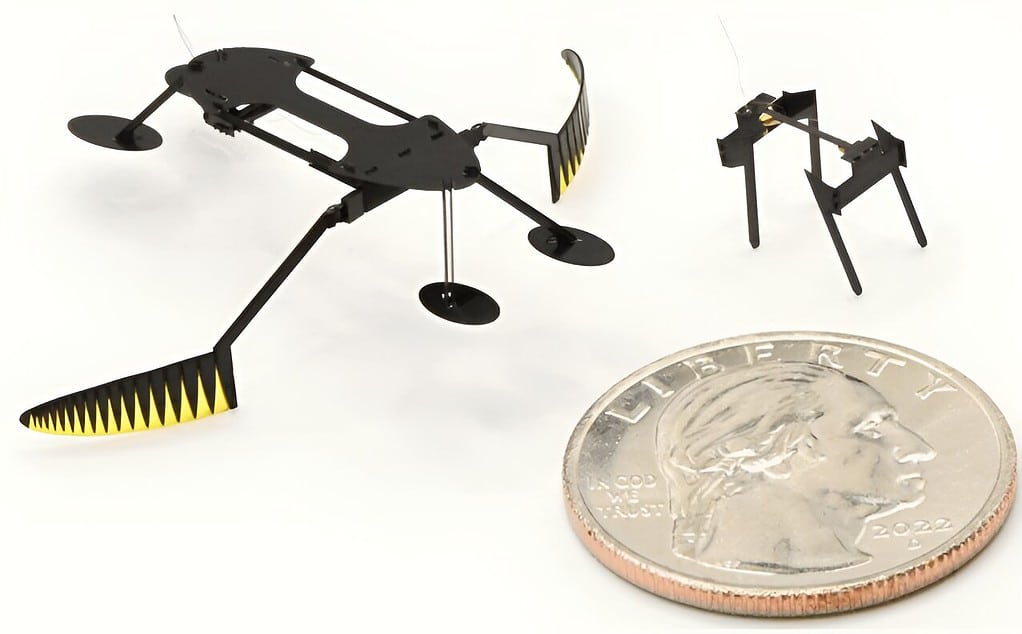
For all the progress we’ve made in the field of robotics, creating insect-like bots has proven to be very challenging. Such small robots could be useful in applications ranging from environmental pollination to search and rescue missions, but creating mechanically sound robots of this size is not an easy feat. Researchers are drawing inspiration from nature, looking towards insects that can inspire new generations of small robots.
At the IEEE Robotics and Automation Society’s International Conference on Intelligent Robots and Systems, researchers from Washington State University presented a mini-bug that weighs only eight milligrams and a water strider that weighs 55 milligrams. Both can move at about six millimeters per second.
That may not sound very fast, but it’s probably the fastest robot of this type ever designed — and it’s fast enough for several applications.
“That is fast compared to other micro-robots at this scale although it still lags behind their biological relatives,” said Conor Trygstad, a PhD student in the School of Mechanical and Materials Engineering and lead author on the work. An ant typically weighs up to five milligrams and can move at almost a meter per second.
Getting these insects moving
The key to this type of robot is something called an actuator. Actuators are devices designed to convert an energy form into mechanical motion to control a system or mechanism. Electric actuators convert electrical energy into motion, while hydraulic actuators use fluid pressure and pneumatic actuators rely on compressed air. Actuators are fundamental components in robotics, automotive technology, industrial machinery, and aerospace systems.

Trygstad used a specialized fabrication technique to make the smallest actuators known to man (as of now). This is pretty much the most impressive innovation here — the thing that enabled researchers to build robots this small.
At the core of the actuators is a material called a shape memory alloy. Essentially, this material “remembers” a shape and returns to said shape when its temperature changes. The actuators don’t have any engines or moving parts. Instead, the actuators are heated using very small currents and mimic a wing-flapping movement. In preliminary tests, the robots can flap their wings 40 times per second, and the actuators can lift 150 times their weight.
“The actuators are the smallest and fastest ever developed for micro-robotics,” said Néstor O. Pérez-Arancibia, Flaherty Associate Professor in Engineering at WSU’s School of Mechanical and Materials Engineering who led the project.
“They’re very mechanically sound,” Trygstad also said. “The development of the very lightweight actuator opens up new realms in micro-robotics.”
The researchers are now looking at other types of robots that can move on their own, autonomously, without a power supply. This will be an essential step before these robots can actually be deployed and will involve small batteries or catalytic combustion.



